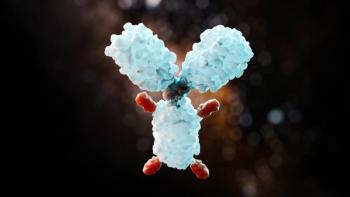Key Takeaways
- Development and Validation: The Best Asthma Control Test for School Children and Adolescents (Best ACT-S) is a 7-question model that effectively assesses asthma control levels in children aged 6 to 15 years that was developed and validated in a multicenter study across 11 pediatric clinics in Japan.
- Questionnaire Components: The questions, created with patient and caregiver responses, focus on the frequency of asthma symptoms, hospitalization, and self-assessed control status. In the study, the Best ACT-S demonstrated strong statistical fit and separation, with an area under the curve of 0.934 in the development dataset.
- Clinical Application: The Best ACT-S serves as a comprehensive tool for asthma assessment in children and adolescents, aligning with the Japanese Pediatric Asthma Guidelines and effectively distinguishing between well-controlled and poorly controlled asthma. The questionnaire also shows correlations with lung function parameters, emphasizing its potential clinical utility.
The primary goal of asthma management is the minimization of exacerbations, lung function decline, and maintaining good asthma control. In Japan, the Japanese Pediatric Asthma Guidelines (JPGL) emphasize a higher level of control in younger patients with asthma. Based on these existing guidelines, the authors of a study published in Allergology International developed a pediatric asthma control questionnaire to assess the control status of school-age and adolescent patients aged 6 to 15 years with asthma.
This multicenter, cross-sectional observational study recruited patients across 11 pediatric clinics and hospitals across Japan. A total of 362 children aged 6 to 15 years of age (mean age: 9.7 years) who were diagnosed with or receiving treatment for bronchial asthma as well as their caregivers were enrolled in the study. The most common reported treatments used were inhaled corticosteroids and long-acting beta2-agonists. Patients who had concurrent illnesses other than non-severe allergic rhinitis and atopic dermatitis requiring treatment were excluded from the study.
A preliminary questionnaire that included open-ended questions was administered to both patients and their caregivers that included questions such as “What is a bas asthma condition?”, and “What are the problems of having asthma?”, to elicit information about what thought was relevant to asthma control. To assess asthma control, pediatric allergy specialists developed a working questionnaire made up of 14 questions using the responses from the initial survey. Further, the patients’ descriptions of their asthma condition in the preliminary questionnaire were categorized into multiple concepts of asthma control, and working questions were developed using slightly different expressions for each concept while still retaining the initial expressions used by the patients.
The working questionnaire for caregivers used 34 questions from the working questionnaire developed for asthma control. Further, treating physicians were given a questionnaire consisting of 10 total questions, of which 6 were for the evaluation of asthma control level (eg, the frequency of moderate and severe symptoms, mild symptoms, and rescue use of short-acting beta2 agonists), and the remaining 4 for the validation of the control test being developed (eg, exacerbation episodes in the past year, the need for change in controller medications, JPGL-defined severity, and physician-judged control level).
Using a development dataset, a prediction model was created using logistic regression analysis with the objective variable being the control level defined by the physician questionnaire (“well controlled/partially controlled” vs “poorly/very poorly controlled) with the explanatory variable being each response to the working questionnaire. Further, independent analyses were conducted using either the patient response data or caregiver response data as explanatory variables, with the best combination of questions being selected.
Of the total 362 cases involved in the study, 243 cases (both patient and their caregiver) were used for the development dataset, and the remaining 119 were used for the validation dataset. Logistic regression analysis of the development dataset identified 7 questions—3 from the patient questionnaire, 4 from the caregiver questionnaire—as meeting the criteria for assessment of good asthma, with questions surrounding the frequency of asthma symptoms, hospitalization, and self-assessed control status at the time of visits and within a month. Further, the 7-question model—which demonstrated strong statistical fit with an Akaike’s information criterion of 110.5 and area under the curve (AUC) of 0.934—was named the Best Asthma Control Test for School Children and Adolescents (Best ACT-S).
The AUCs were 0.9126 (95% CI 0.8689-0.9563) and 0.8615 (95% CI 0.7795-0.9435) in the development dataset and validation dataset, respectively. In both the development and validation datasets, the performance of Best ACT-S for screening control levels specified in the JPGL guideline was evaluated, and a cut-off score of 25 resulted in the best balance between sensitivity and specificity, as well as best discrimination between patients with “well controlled or partially controlled” symptoms compared to “poorly controlled or very poorly controlled” symptoms. The ability of Best ACT-S to separate “well-controlled” asthma from other levels of control—partially, poorly, and very poorly controlled—and to separate “very poorly controlled” asthma from other levels of control—well, partially, and poorly controlled—were also evaluated, with cut-off scores of 27 and 18 appearing to be the best for balancing sensitivity and specificity.
The study authors determined that the strongest question model for patients and caregivers was the 7-question Best ACT-S model. In addition, the model effectively separates between well-controlled and poorly controlled asthma based on the JPGL. Further, the questionnaire also demonstrates correlations between lung function parameters, suggesting that it serves as a potential comprehensive tool for asthma assessment in children and adolescents. The Best ACT-S complements the previously developed Best Asthma Control Test for Preschoolers questionnaire, according to the study authors.
The authors note that limitations such as the relatively small patient population could have influenced the results. In addition, the wide age range covered by the Best ACT-S (6 to 15 years) could be a limitation due to the differences between younger children and adolescents; however, the authors note that a post-hoc analysis by age group was conducted to address this issue, allowing the developed questionnaire to be used for the 6 to 15 year age range.
Reference
Matsunaga M, Sato Y, Nagao M, et al. Development and validation of a new asthma questionnaire to help achieve a high level of control in school-age children and adolescents. Allergol Int. 2023. doi:10.1016/j.alit.2023.11.001

















































































































































































































